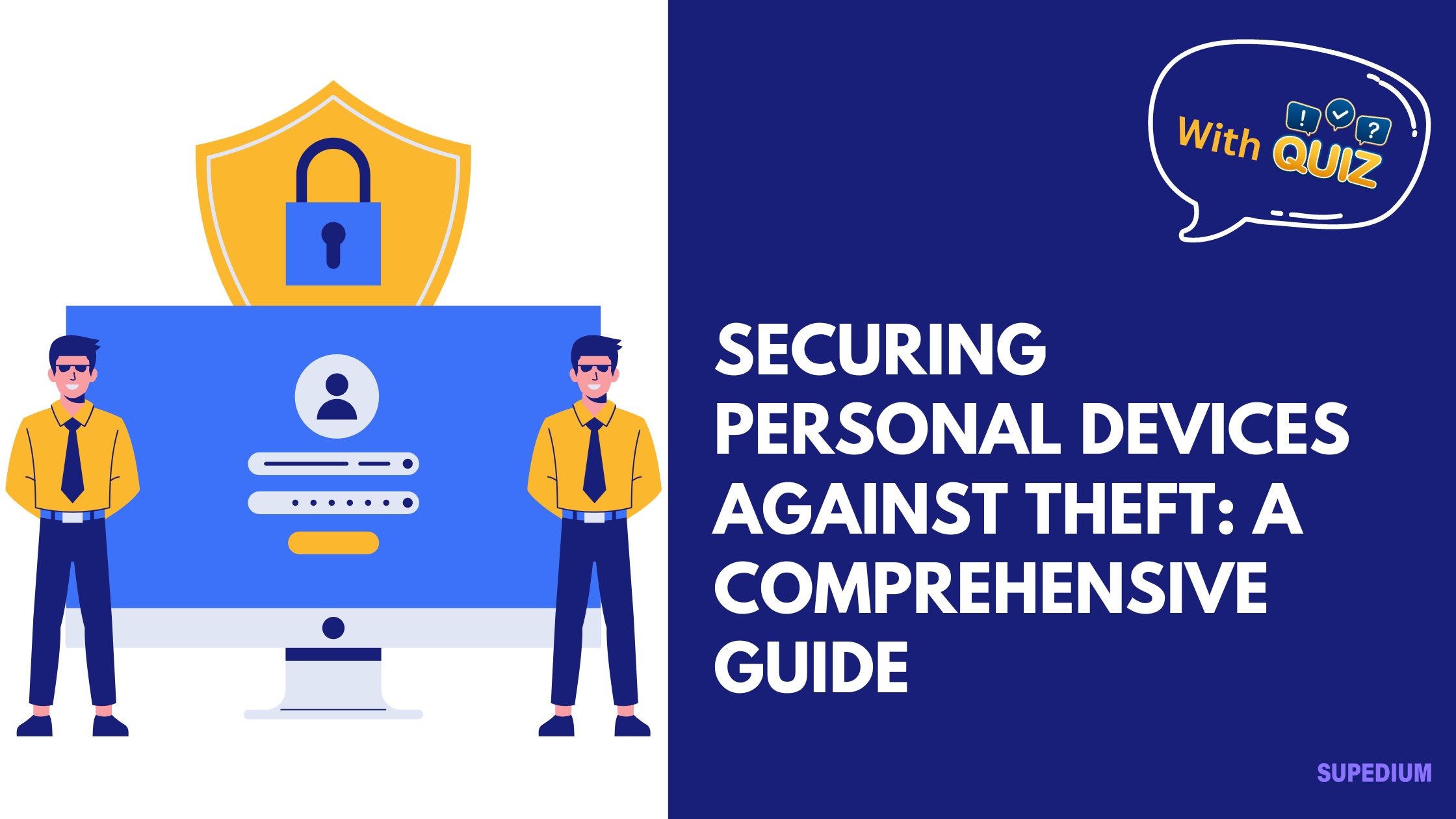Table of Contents
![]()
In our increasingly digital world, personal devices such as smartphones, tablets, laptops, and wearables have become indispensable tools in our daily lives. They store a wealth of personal information, from financial data to private communications. Securing these devices against theft is crucial not only to protect your personal data but also to avoid financial and privacy breaches. This guide explores effective strategies for safeguarding your personal devices, covering physical and digital security measures, backup solutions, and best practices.
Understanding Personal Devices
Personal devices include smartphones, tablets, laptops, and wearables like smartwatches and fitness trackers. Each type of device has its own security considerations, but common to all is the need to protect the data they contain. Theft of these devices can lead to unauthorized access to sensitive information, posing risks to your financial and personal security.
Physical Security Measures
Device Tracking and Recovery
One of the most effective ways to recover a stolen device is through tracking services. Most modern devices come with built-in tracking features:
- iOS Devices: Use “Find My iPhone” to locate, lock, or erase your device remotely.
- Android Devices: Utilize “Find My Device” for similar functionalities.
In addition to built-in services, third-party tracking apps can offer extra features and improve recovery chances.
Secure Storage
When not in use, store your devices securely to reduce the risk of theft. Use strong lock screens, such as PINs, passwords, or biometric authentication (fingerprint or facial recognition). Avoid leaving devices unattended in public places and consider carrying them in secure pockets or bags.
Physical Locks and Anti-Theft Devices
For added physical security:
- Laptop Locks: Attach a lock to your laptop and secure it to a stationary object.
- Portable Safes: Use small, portable safes for added protection, especially when traveling.
- Security Cables: Employ cables to secure devices in public or semi-public areas.
Digital Security Measures
Strong Authentication
Enhance device security by creating strong, unique passwords for each account and device. Implement two-factor authentication (2FA) wherever possible. This additional layer of security requires not only a password but also a second form of verification, such as a code sent to your phone.
Encryption
Encryption converts data into a format that is unreadable without a decryption key. Enable device encryption settings:
- Windows: Use BitLocker.
- Mac: Activate FileVault.
- Mobile Devices: Both iOS and Android offer built-in encryption.
Encrypt sensitive files and communications to protect them even if your device is compromised.
Security Software
Install and regularly update antivirus software to protect against malware and other threats. Ensure that firewall protection is enabled to safeguard your device from unauthorized access.
Regular Updates
Keep your operating system and applications up to date. Updates often include patches for security vulnerabilities that could be exploited by attackers. Regular maintenance helps protect your device from emerging threats.
Backup and Recovery
Regular Backups
Regularly back up your data to prevent loss in case of theft or damage. Use cloud backup services like iCloud or Google Drive for automatic backups. Additionally, maintain local backups using external hard drives or network-attached storage (NAS).
Recovery Plans
Prepare for potential theft by creating recovery passwords and backup codes. Know how to remotely wipe your device’s data to prevent unauthorized access. Familiarize yourself with the procedures for your specific device and backup service.
Safe Usage Practices
Avoiding Suspicious Links and Apps
Be cautious when clicking on links or downloading apps. Phishing attempts and malicious software can compromise your device’s security. Download apps only from trusted sources like official app stores and be wary of permissions requested by apps.
Public Wi-Fi Security
Public Wi-Fi networks can be vulnerable to attacks. Use a Virtual Private Network (VPN) to encrypt your internet connection and protect your data. Avoid conducting sensitive transactions or accessing financial accounts over unsecured networks.
Regular Device Audits
Periodically review the apps and permissions on your device. Remove any that you no longer use or that have excessive permissions. Monitor your device for unusual activity that could indicate a security breach.
Educating Yourself and Others
Awareness Training
Understanding the risks associated with personal device theft and implementing preventive measures are crucial. Educate yourself and others in your household or workplace about device security practices. Awareness can significantly reduce the risk of theft and data breaches.
Staying Informed
Keep up with the latest security trends and updates. Participate in cybersecurity communities and forums to stay informed about emerging threats and new security tools.
Responding to Theft
Immediate Actions
If your device is stolen, act quickly:
- Report the theft to local authorities.
- Use your device’s tracking service to locate it if possible.
Post-Theft Actions
After reporting the theft:
- Change passwords for any accounts that were accessible from the stolen device.
- Monitor your accounts for unusual activity.
- Contact your service provider to report the stolen device and potentially disable it.
Conclusion
Securing your personal devices against theft involves a combination of physical and digital security measures. By implementing strong authentication, encryption, and regular backups, and by adopting safe usage practices, you can significantly reduce the risk of theft and mitigate potential damage. Staying informed and prepared enhances your ability to respond effectively if a theft occurs.






Be the first to comment